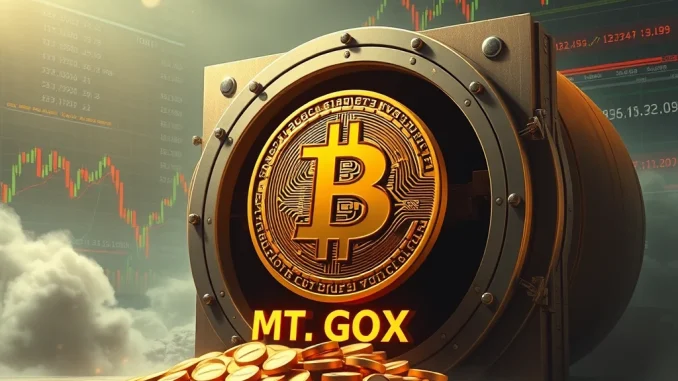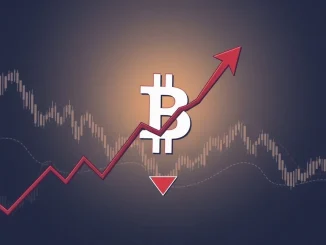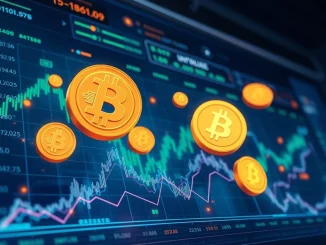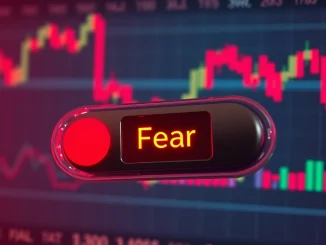
The ghost of crypto past is stirring. Mt. Gox, the name synonymous with the dark days of cryptocurrency exchange hacks, is back in the headlines. In a dramatic turn of events, the now-defunct platform has executed a series of significant Bitcoin transfers, injecting a wave of both anticipation and anxiety into the crypto market. Are these movements a step closer to creditor repayments, or is there more to this unfolding saga? Let’s dive into the details of this developing story.
What’s Happening with the Mt. Gox Bitcoin Transfer?
According to blockchain analytics firm Onchain Lens, in the last seven hours, Mt. Gox has moved a staggering 11,834 BTC. This massive Bitcoin transfer is broken down into two key transactions:
- First Transfer: 11,502 BTC, valued at approximately $905 million.
- Second Transfer: 332 BTC, valued at around $26.67 million.
Both of these substantial amounts were sent to anonymous addresses, fueling speculation and discussions across the crypto community. The total value of Bitcoin transferred amounts to a hefty $931 million, a figure that’s hard to ignore in any market context.
A Quick Recap: The Mt. Gox Saga
For those newer to the crypto space, Mt. Gox represents a pivotal, albeit painful, chapter in Bitcoin’s history. Here’s a quick rundown:
- The Hack: In 2014, Mt. Gox suffered a catastrophic hack, revealing the theft of 750,000 BTC in customer funds and 100,000 BTC of the exchange’s own assets. This event shook the then-nascent crypto world to its core.
- Bankruptcy and Legal Battles: Following the hack, Mt. Gox filed for bankruptcy in Japan, initiating a long and complex legal process to determine how to compensate affected users.
- Creditor Compensation Plan: Years later, in 2021, a Japanese court finally approved a compensation plan for Mt. Gox creditors. This plan outlined the intention to repay creditors with 142,000 BTC, 143,000 BCH (Bitcoin Cash), and 69 billion Japanese Yen.
The shadow of the Mt. Gox hack has loomed large over the crypto exchange landscape for years, serving as a stark reminder of the risks inherent in early crypto infrastructure and security vulnerabilities.
Why is this BTC Movement Significant Now?
The timing and scale of these BTC transfers are critical. Several factors amplify the significance of this event:
- Creditor Repayment Speculation: The most immediate and widely discussed theory is that these transfers are related to the long-awaited creditor repayment process. With the compensation plan approved, many believe this could be the initial movement of funds to facilitate distributions.
- Market Impact: A potential distribution of 142,000 BTC back into the market has significant implications. The sheer volume of Bitcoin could create selling pressure, at least in the short term, as creditors may choose to liquidate some or all of their recovered assets.
- Transparency Concerns: The transfers to anonymous addresses raise questions about transparency. While it’s common practice for exchanges to use multiple wallets for security and operational reasons, the lack of immediate clarity fuels uncertainty.
Potential Scenarios and Market Reactions
Let’s consider a few potential scenarios that could unfold following this BTC transfer:
| Scenario | Potential Market Reaction | Creditor Impact |
|---|---|---|
| Creditor Repayments Begin | Initial price dip due to selling pressure, followed by potential market stabilization as repayments are absorbed. | Positive for creditors finally receiving compensation after a decade-long wait. |
| Internal Fund Movement | Short-term market uncertainty and speculation, minimal direct price impact if funds remain within Mt. Gox ecosystem. | Limited immediate impact on creditors, but could be a step towards eventual repayment. |
| Unforeseen Issues | Potential for market volatility and negative sentiment if transfers indicate new problems or delays in repayment. | Negative impact on creditor confidence and further delays in compensation. |
What Does This Mean for the Future of Crypto Exchanges?
The Mt. Gox saga, and these recent transfers, serve as crucial lessons for the crypto exchange industry and its users. Key takeaways include:
- Security is Paramount: Robust security measures are non-negotiable for any crypto exchange. The Mt. Gox hack highlighted the devastating consequences of inadequate security protocols.
- Regulation and Oversight: Increased regulatory scrutiny and oversight are becoming increasingly important to protect users and ensure market stability. While decentralization is a core tenet of crypto, some level of regulation is likely necessary for mainstream adoption.
- Transparency and Communication: Clear and consistent communication from exchanges, especially during crises, is vital for maintaining user trust and market confidence.
Navigating the Uncertainty: What to Watch For
As the Mt. Gox situation continues to develop, here’s what to keep an eye on:
- Official Announcements: Monitor official statements from Mt. Gox trustees and related entities for clarity on the purpose of these transfers.
- Blockchain Analytics: Track the flow of these funds using blockchain explorers to understand their destination and subsequent movements.
- Market Sentiment: Observe market reactions and sentiment across social media and trading platforms to gauge the overall impact and potential volatility.
Conclusion: A Cautious Step Forward?
The recent Bitcoin transfer by Mt. Gox is a significant event that has reignited discussions about the exchange’s past and future. While the crypto community eagerly awaits confirmation on whether these movements are indeed related to creditor repayment, the situation underscores the long shadow cast by historical events in the crypto world. Whether this marks a positive step towards resolution for long-suffering creditors or introduces new complexities remains to be seen. One thing is certain: the crypto market will be watching closely as this Mt. Gox saga continues to unfold.



